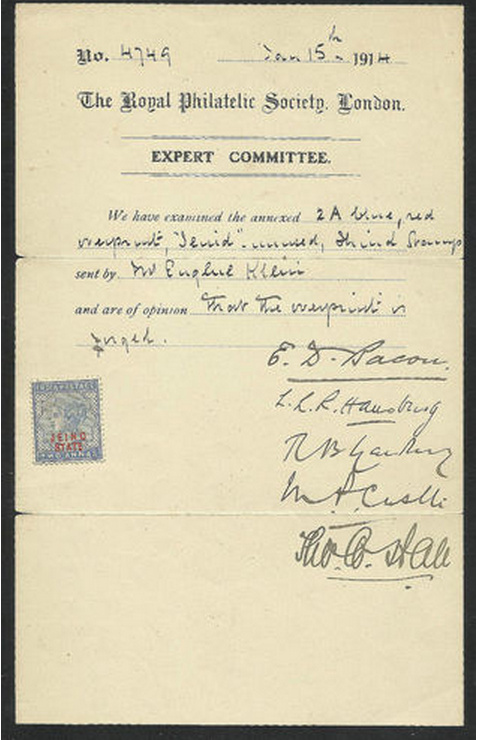
Protection Of Certification
By about 1900, philately had become popular enough, and the classic material so well diffused through many hands that knowledgeable dealers and collectors became rarer. As prices continued to increase in our more and more popular hobby, stamp certification boards were set up to issue certificates so that dealers and collectors could trade with greater confidence. The early certificates did not mention quality. The only thing they were concerned about was whether the stamp was genuine or not. By about 1930, this began to change. Despite widespread collector apprehensions, counterfeiting has never been a major problem in our hobby. Most counterfeits are crude and were issued more as space fillers for early collectors than to cheat them. But stamp repairs and alterations have been a major issue in philately and continue to be.
By about 1930, collectors were beginning to pay big premiums for more and more perfect stamps. This has accelerated and continues today. A perfect NH specimen of a mint early US stamp can sell for a thousand times as much as a defective copy of the same stamp. And the differences in quality and centering are so arcane that very few people, even those who have been around stamps all their lives, can tell, with certainty, the differences. Certification today, then, is largely about quality, grading, and the determination of repairs, alterations, and flaws. And it has created a dangerous world, as certifying standards have changed and will continue to change. Certificates that are ten or five or even two years old are often reversed. One expertization board will often disagree with another. All of this would be amusing if the stamps in question were not worth thousands of dollars. When experts change their mind, someone suffers a large monetary loss (and I bet you guessed it isn’t the expert).
This problem only exists at the higher price points of our hobby, among the rarest and highest quality stamps. Many collectors, even many who could afford to gratify their tastes with the finest of everything, have realized that the best way to protect yourself is to not pay extreme premiums for quality. When major auction houses essentially demand recertification of everything before they will resell it for you, this is an admission that the shoreline is shifting so fast that you are in danger of ending up under water. There are millions of stamps in our hobby in quality grades and rarity categories that don’t require certification and which sell at modest percentages of catalog. Collectors who buy those stamps never have to worry.
